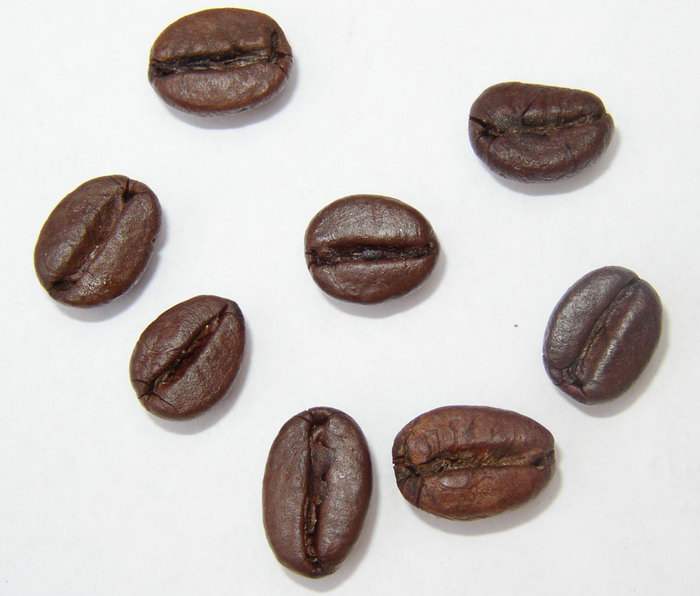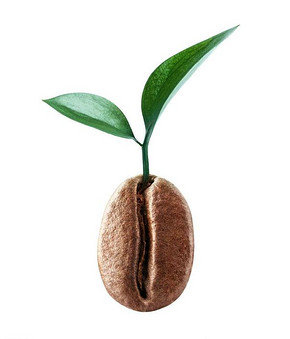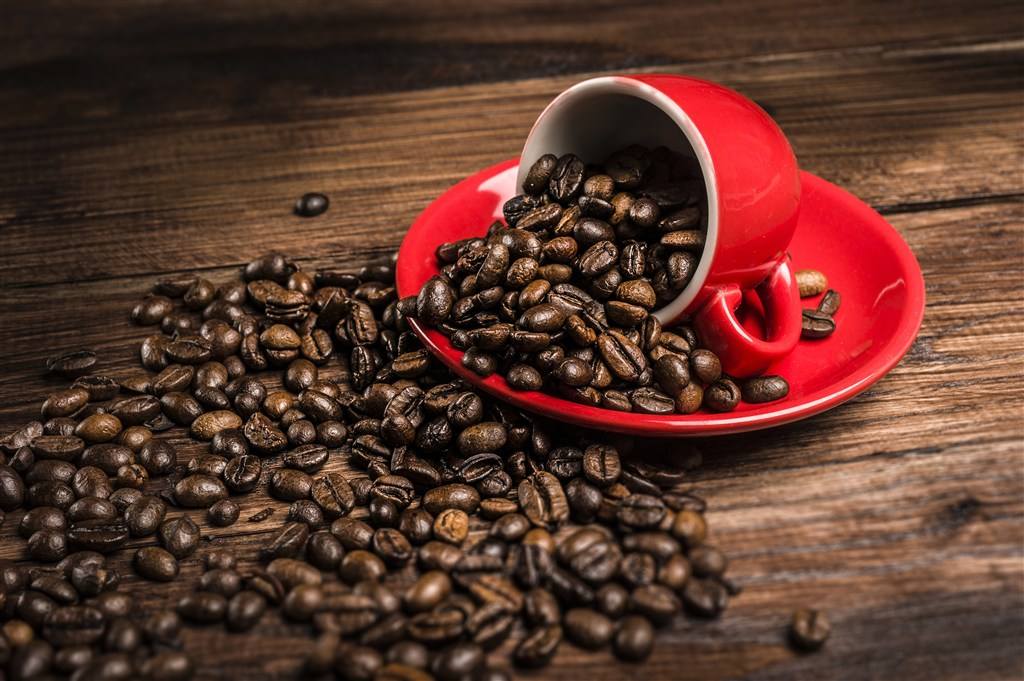Evolution of processing methods of coffee beans in Brazil
Follow the caf é (Wechat official account vdailycom) and found that Beautiful Cafe opened a small shop of its own.
First of all, the earliest and most primitive is the method of tanning.
Coffee originated in the Cafa forest in Ethiopia. At first, coffee collectors did not pick fresh coffee fruit directly from trees, but let the sun dehydrate ripe coffee fruit on the branches. wait for the fruit to become withered and purplish black, and then pick it for storage. When you want to drink, mash it, and then take out the coffee beans inside. This is different from today's sun drying method, which is to pick the coffee fruit from the tree when it is fresh, go into the sink to remove the floating beans, and then put the remaining coffee fruit on an elevated net bed to dry and dehydrate.

African elevated net bed to dry coffee fruit
Later, coffee was sold to Europe by Arabs and immediately became popular with Europeans. At the end of the 17th century, the Dutch East India Company successfully planted coffee trees on the island of Java and invented water washing in the mid-18th century. The washing method is to peel the coffee fruit, and then soak the seed shell together with the sticky pectin on the outside in water, so that the sticky pectin layer outside the seed shell can fall off very easily after fermentation.
Washed coffee fruit
However, the biggest disadvantage of water washing method is that it consumes too much water, which increases the production cost in some coffee growing areas with insufficient water resources.
At the end of the last century, Brazil, the largest coffee producer, invented the semi-washing method (also known as half-sun method), which greatly reduced the consumption of water resources in the process of raw bean treatment. Why is it called semi-washing, which shortens the time of soaking the coffee fruit in water to an hour, so that the pectin outside the seed shell has not yet completely fallen off, and then it will be removed for natural drying and dehydration. This saves water and time compared with the traditional washing method, and increases the sweetness and thickness of the coffee.
Later, the semi-washing method was gradually introduced into Central American countries, but unlike the dry climate of Brazil, most Central American countries have a humid climate, so the coffee fruits are peeled and washed for a short time and then dried, which is easy to cause the smell of sour rot because of the wet weather. As a result, Panama and Costa Rica began to improve the semi-washing method in Brazil and began to use honey treatment at the beginning of this century.
Honey treatment is to remove the pericarp and part of the pectin, without washing, directly put on the African elevated net bed for drying. According to the proportion of retained pectin, those with more pectin are called black honey treatment (almost all of the pectin is retained), and those with less pectin are called yellow honey treatment (less than half of the pectin) and red honey treatment (retain at least 80% of the pectin).
Coffee and raw beans dried with pectin
So far, the four treatments of raw coffee beans that we often come into contact with today are complete. We can see that the route of its evolution is also a process of gradual improvement: first, the traditional sun treatment, to water washing, then to semi-washing (also known as half-sun), and then honey treatment.
In fact, there are still many ways to treat raw coffee beans. For example, the treatment method used in Kenya, which is an important producing area of fine coffee, is called double fermentation washing, and red wine treatment and even cola treatment have appeared in some countries.
Important Notice :
前街咖啡 FrontStreet Coffee has moved to new addredd:
FrontStreet Coffee Address: 315,Donghua East Road,GuangZhou
Tel:020 38364473
- Prev

Brief introduction of Brazilian pectin sun-dried coffee beans
Following Cafe Review (official Wechat account vdailycom) found that Beautiful Cafe opened a small shop in Brazil pectin sun drying coffee beans, the most widely used in Brazil; the drawback of the sun method is easy to mix defective beans, the appearance of poor appearance between beans dry treatment (secado), also known as natural full-time drying (natural). Sunburn is one of the ways to treat coffee fruits.
- Next

Introduction to the Historical and Cultural Story of Brazilian Coffee Bean varieties the flavor and taste characteristics of iron pickup coffee bean cup
Following Cafe Review (Wechat official account vdailycom) found that Beautiful Cafe opened a small shop of its own Brazilian Coffee refers to coffee produced in Brazil. There is a wide variety of Brazilian coffee, the vast majority of which are unwashed and sun-dried, classified according to the name of the state of origin and the port of transport. Brazil has 21 states and 17 states produce coffee, but four of them produce the most coffee.
Related
- Detailed explanation of Jadeite planting Land in Panamanian Jadeite Manor introduction to the grading system of Jadeite competitive bidding, Red bid, Green bid and Rose Summer
- Story of Coffee planting in Brenka region of Costa Rica Stonehenge Manor anaerobic heavy honey treatment of flavor mouth
- What's on the barrel of Blue Mountain Coffee beans?
- Can American coffee also pull flowers? How to use hot American style to pull out a good-looking pattern?
- Can you make a cold extract with coffee beans? What is the right proportion for cold-extracted coffee formula?
- Indonesian PWN Gold Mandrine Coffee Origin Features Flavor How to Chong? Mandolin coffee is American.
- A brief introduction to the flavor characteristics of Brazilian yellow bourbon coffee beans
- What is the effect of different water quality on the flavor of cold-extracted coffee? What kind of water is best for brewing coffee?
- Why do you think of Rose Summer whenever you mention Panamanian coffee?
- Introduction to the characteristics of authentic blue mountain coffee bean producing areas? What is the CIB Coffee Authority in Jamaica?

